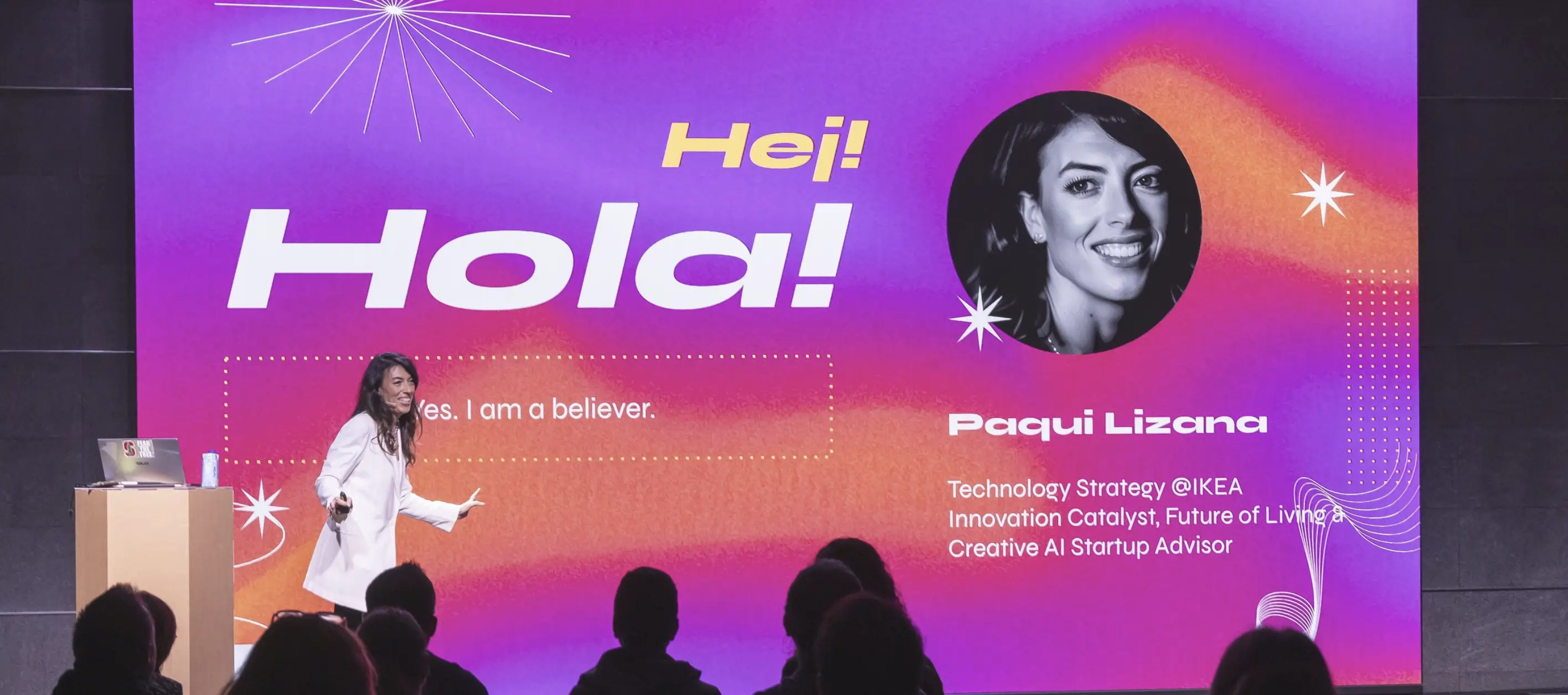How Swarm Intelligence Can Result in Smarter, Faster Decisions


Louis Rosenberg PhD, a prolific inventor, scientist, and entrepreneur, developed Swarm AI, a new technology that combines real-time human insights and AI algorithms to produce “hive minds” modeled after natural swarms, for humans to converge on optimized insights, predictions, and decisions. Dr. Rosenberg shared his thoughts with SU in this wide-ranging interview on the future of AI, trust, and how humans can amplify their intelligence and make better, faster decisions.
To set the stage, can you distinguish between neurological intelligence, Swarm Intelligence, and Artificial Swarm Intelligence?
Sure. In the natural world, the process of evolution has produced two unique and powerful forms of intelligence that we know of:
- Neurological intelligence emerges by connecting large numbers of simple processing units (neurons) into complex real-time networks (brains).
- Swarm Intelligence is similar in many ways, but connects groups of intelligent organisms (brains) into complex real-time networks that biologists call swarms. A swarm is a “brain of brains” that has the capacity to function as a superintelligence, as it can significantly outperform the individual members that make up the system.
Artificial Swarm Intelligence, or simply Swarm AI, connects human groups into emergent systems moderated by AI algorithms modeled on biological swarms. An Artificial Swarm Intelligence of a human population is a “hive mind” and it can achieve superintelligent results and significantly outperform all the individual members who participate.
In nature, swarms of bees have been shown to make decisions by working together as a unified system, significantly amplifying their combined intelligence. The same is true of flocks of birds, colonies of ants, and schools of fish. With that context, most researchers working on AI have been focused on replicating neurological intelligence, building artificial systems that emulate biological neurons and the densely interconnected networks from which intelligence emerges.
Why focus on Artificial Swarm Intelligence in particular?
My personal focus for the last five years has been looking at nature’s other method, Swarm Intelligence, and building artificial systems that connect groups of humans together over computer networks, enabling us to think together in systems that emulate the superintelligence that emerges from natural swarms. Enabling humans to think together as superintelligent systems is the reason we founded Unanimous AI five years ago and the reason we created the Swarm software platform. When groups of people log into the platform, they can think together as a real-time system and quickly answer questions, make predictions, reach decisions, and prioritize objectives, converging on solutions that significantly outperform their individual abilities. While building “hive minds” from human groups sounds like science fiction, many Fortune 500 companies already use the Swarm platform to amplify the intelligence of business teams, enabling more accurate forecasts, better prioritizations, deeper insights, and optimized prioritizations.
Can business teams really form a superintelligence by thinking together, moderated by AI algorithms based on biological swarms?
Unanimous AI was founded based on a simple premise that if birds and bees and fish can get so much smarter by thinking together in swarms, the same should hold true for human swarms. But it was a big unknown, as nobody had ever created human swarms before. So we built the Swarm platform (formally called UNU) and partnered with numerous top universities to rigorously test if human groups can amplify their intelligence by swarming. The results have shown significantly greater amplification of intelligence than we expected. For example, we recently published a study with Stanford University in which groups of doctors were connected together into real-time human swarms by using the Swarm platform. They were tasked with diagnosing chest x-rays for the presence of pneumonia. The results, which were published in 2018, showed that when thinking together as a swarm, doctors reduced their diagnostic errors by over 30%. In another study conducted with researchers at Oxford University, groups of sports fans were tasked with predicting English Premier League soccer games. The results demonstrated that when thinking together as a Swarm powered superintelligence, these regular fans were able to outperform Las Vegas betting markets. Similar amplifications of intelligence were found in numerous published studies forecasting equity markets, sales volumes, and political elections. Simply put, human swarms are very smart.
People in the tech world love to pronounce things dead: Email is dead, print media is dead. Are traditional surveys and polls dead?
Traditional polls and surveys have been the most common method for harnessing the intelligence of human groups for over 100 years, and these traditional techniques do amplify intelligence. But is this really the best way to harness and amplify group intelligence? Hundreds of millions of years of evolution suggest there is a better solution—biological groups don’t aggregate static data; they form interactive systems, or swarms, that simultaneously converge on optimal solutions. Numerous academic studies have shown that real-time swarming can generate significantly more accurate insights from human populations than traditional surveys and polls, especially when using limited group sizes on the order of 20 to 50 people. For example, a recent study compared Artificial Swarm Intelligence to various methods of statistical polling and found that the group was able to converge on the optimal solution at significantly higher rates when swarming as compared to polling. Will swarming replace polling? For applications where accuracy is paramount, swarming is often the superior solution, especially when access to large populations is limited. That said, for applications where accuracy is not the highest priority, polling may be a preferred process as it does not require simultaneous participation the way swarming does.

SU Executive Founder and Director Peter Diamandis included Swarm AI technology in a "Top 10 Tech Trends Transforming Humanity” roundup. What did he find so compelling?
Peter is interested in amplifying human intelligence, in a broad sense—that we humans can get substantially smarter together, connecting to become a true superintelligence—but one that inherently maintains our very human values and aspirations. Unlike many AI technologies that could replace humans with automated algorithms, Swarm AI technology aims to keep humans in the loop, amplifying our natural decision-making abilities while leveraging the vast database of unstructured information stored in our heads. This offers us a pathway to superintelligent systems which inherently leverage human knowledge, wisdom, values, morals, and sensibilities. While this has profound impacts for the future, it’s also important in the short term, as there are many professions at risk of being replaced by AI, from financial analysts to radiologists. We believe that human practitioners have knowledge, wisdom, insights, and intuition that should not be tossed out in favor of big-data solutions that find patterns in historical data sets. Humans have a massive database on contextual information about our world, having deep instincts and intuition about everything from patient health to economic conditions. By having human participants connected together into a superintelligent swarm, we can leverage the remarkable abilities of humans, amplified by the power of AI. In a study published by Stanford University School of Medicine, groups of human doctors, connected by Swarm AI algorithms were 22% more accurate than the most advanced deep learning system that uses only historical data to make diagnoses. We’ve seen similar results with financial forecasts, sales predictions, and even sports forecasting.
Your platform predicted the 2016 Kentucky Derby “Superfecta.” How does all that predictive horsepower apply in a business context?
We make bold assertions about the ability to amplify human intelligence, turning networked groups of people into superintelligent systems. To stand behind these assertions, we often take on challenges from the media. One challenge was from CBS Interactive, asking us to amplify the intelligence of sports fans to predict the Kentucky Derby. We had never done anything in horse racing before, but we were game. We connected together 20 horse racing enthusiasts inside the Swarm platform and had them predict not just the winner, but first, second, third, and fourth place finishers in order. In horse racing, that’s called the Superfecta, and the odds of picking it correctly were 540:1. Our prediction was perfect, and anyone who bet $20 on the right combination won $11,000. I placed a $20 bet and won $11,000. It was a powerful demonstration that people are smart and can get even smarter when thinking together as a swarm. At Unanimous AI, we work with Fortune 500 companies that create human swarms to predict the success of products, the forecast the effectiveness of marketing campaigns, and to optimize sales and inventory estimates. We also work with hedge funds that use Swarm to optimize their forecasts when managing asset positions.
The emergence and convergence of exponential technologies continue to accelerate the pace of business. How can we make faster decisions without sacrificing accuracy?
People are smart. Groups are even smarter. But human groups often have a difficult time reaching optimized decisions, getting bogged down when individuals get entrenched in their positions. Human Swarming has been shown to enable groups to reach optimized decisions, prioritizations, and forecasts in significantly less time than traditional methods. In other words, thinking together in swarms makes groups smarter and faster.
In your TEDx talk, you talk about amplifying, rather than replacing, human intelligence. Should humans be concerned about being replaced by AI?
I am a firm believer in the power of AI technologies, but I also worry that traditional AI takes humans out of the loop, especially on critical decisions that require full access to our values, morals, sensibilities, and interests. The biggest problem with traditional AI is that it uses “big data” as its input, which inherently reduces the complexities of human society down to over-simplified values stored in databases. That data may never accurately reflect the morals, sensibilities, and interests of human populations. With Swarm AI technology, we solve this issue by connecting humans directly into the system in real-time, ensuring that a true representation of our most human qualities is built into the intelligence that emerges. This may enable us to not just get smarter together, but also get wiser together, reaching optimized decisions that best leverage our shared values, interests, and sensibilities.
There is a lot of concern around the use of algorithms, including biases and lack of transparency. What should we do to address these concerns?
The problem with algorithms is usually not the algorithms themselves, but the underlying data which is an over-simplified representation of human society. It’s this over-simplified data that is so very prone to biases and distortions. Swarm AI technology connects humans directly into systems, rather than using simplified data that attempts to represent human beliefs. This should help reduce distortions.
Organizations like OpenAI are working to make AI more transparent, trustworthy, and beneficial to all. Who should be involved in creating AI best practices?
This may be the most important issue facing society over the next few decades. There is no question that AI will impact every aspect of society, from managing our critical infrastructure to mediating our economy, our politics, and even our personal relationships. This means that everyone has a stake in making sure that AI is transparent, trustworthy, and beneficial.
Thanks so much for this fascinating look at Swarm AI. It will certainly be interesting to see how these technologies continue to play out over time.
My pleasure. Thanks for the opportunity! Main image credit: Christian Lagerek, Pond5.com


